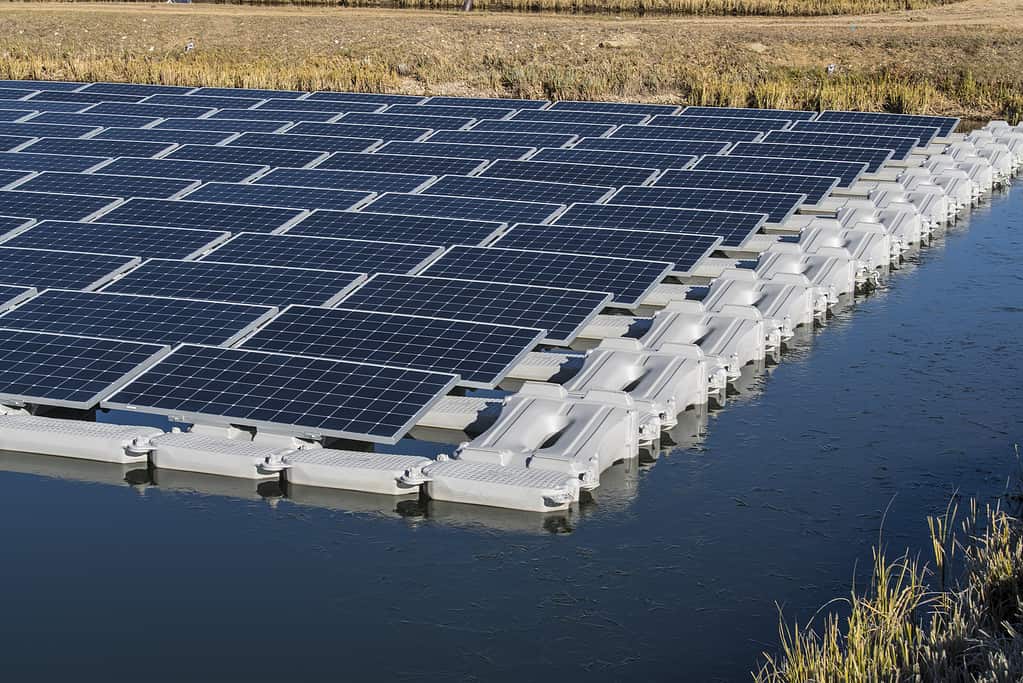Solar power is gradually becoming the cheapest option for new electricity generation in most countries. However, solar also requires large areas of land for installation, uses a lot of water for routine cleaning and suffers from voltage losses when installed in warm climates. This is where floating solar panels come in, offering a potential solution.

Floating solar panels are PV modules set up on platforms that float on water reservoirs, lakes and, where conditions are right, seas and oceans. They are more expensive to construct but also bring many benefits, such as limiting the evaporation of water. This cools the panels, which allows them to operate more efficiently in hot weather.
Previous studies have looked at the potential of floating solar panels but only in a number of specific locations. Now, a group of international researchers has done a global analysis and found the potential is massive. Covering 30% of the world’s reservoirs with solar panels would generate almost 10,000 terawatt hours of power a year, they found.
“As the global energy demand is expected to grow 50% between 2020 and 2050, the electricity that could be generated from FPV systems worldwide would be an important renewable source to help achieve diversification of energy portfolios and improve upon energy security,” the researchers wrote in the journal Nature Sustainability.
The potential of floating solar panels
The global installed capacity of floating solar panels reached 1.3 GW at the end of 2018 and is expected to accelerate, reaching 4.8 GW by 2026. There are already large systems in place in various countries, such as Brazil, China and India. A previous study estimated a potential of 5,200 terawatt hours on more than 6,000 large reservoirs.
In their new study, the researchers used a model of photovoltaic performance in different environmental conditions developed by the US Department of Energy’s Sandia National Lab. They also collected data on wind speed, solar irradiation and temperatures over two decades from two Earth-observing satellite systems, as Ars Technica explained.
Forty countries have a higher floating solar potential than current annual electricity demands, the study showed. Brazil has an electricity demand of 538 terawatt hours a year that can be fully met by floating solar panels, for example. Six countries (Zimbabwe, Laos, Ethiopia, Cameroon, Myanmar and Sudan) could even generate more power than they need.
Worldwide, over 6,200 cities in 124 countries could be powered entirely by local floating solar panels, assuming adequate storage facilities can be developed in tandem, the researchers found. In remote areas, where the central grid usually doesn’t reach, rural microgrids based on floating solar panels could be a solution, they suggested.
But their benefits go beyond just producing electricity, as they can also lower the water temperature. The study found that floating solar panels can reduce evaporation by 46% per reservoir. Overall, the lowered evaporation adds up to 100 cubic kilometers of water a year, which the researchers believe is enough to meet the needs of 300 million people.
The researchers believe that while there’s an extra cost in setting up floating solar panels compared to ground-mounted systems, the synergistic benefits are probably enough to make up the difference. Also, they expect the floating panels to be cheaper with time, considering the value of the land and the lost revenues of associated activities.
“These estimates demonstrating FPV potential align with a larger recognition that solar power is a viable energy source in many developing countries with high solar radiation resources. Nevertheless, achieving this vision will require addressing lingering problems related to policy, planning, financing, regulation, technological support and construction,” they added.






